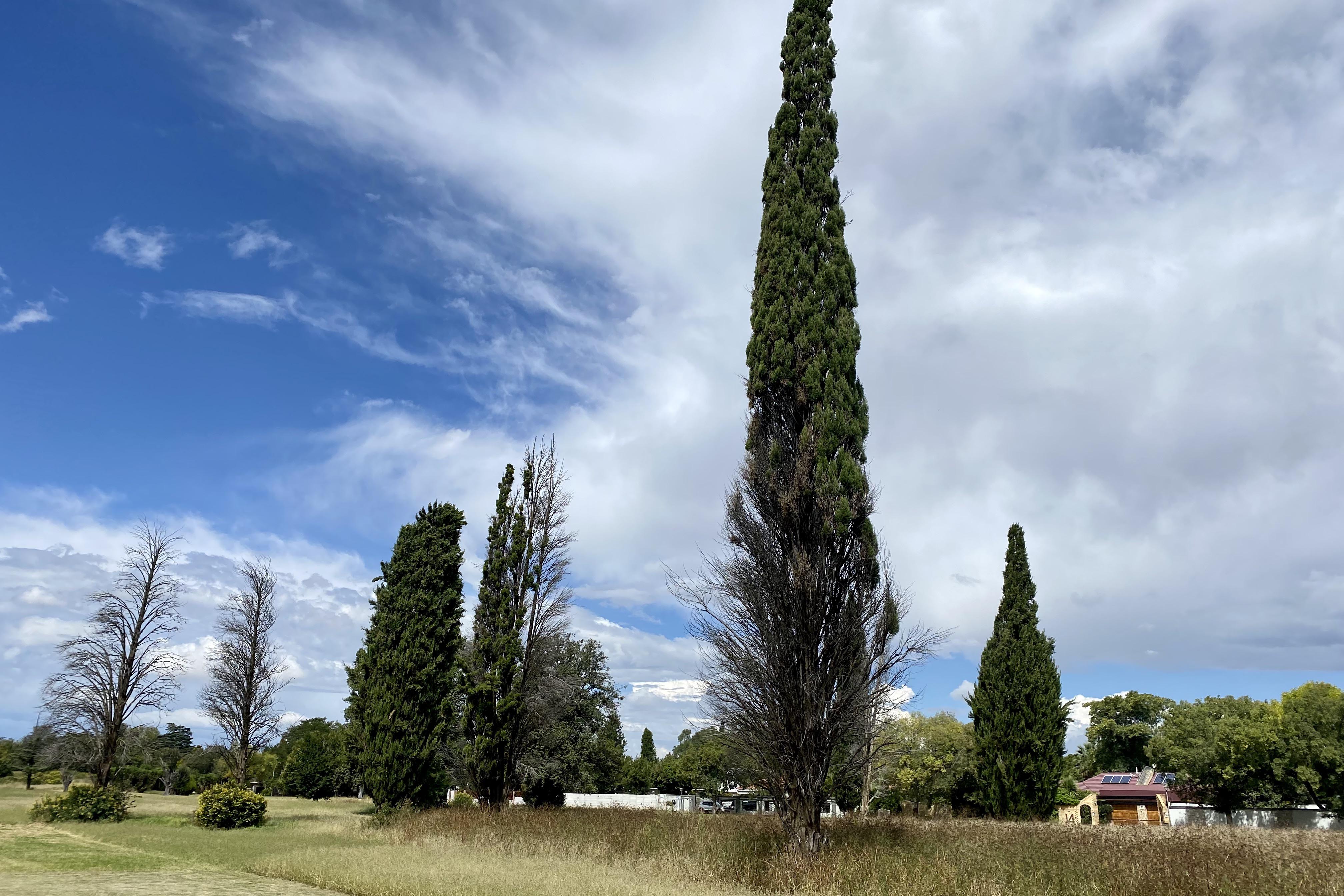FABIan samples dying cypress trees in Welkom 2023-04-14
Welkom, the second-largest city in the Free State province of South Africa, is often referred to as a “city within a garden” because of its numerous parks and trees. Unfortunately, many of these trees are dying from a disease known as cypress canker. Italian cypress (Cupressus sempervirens) is a popular ornamental tree that has been widely planted in Welkom, commonly found on traffic circles, in parks, private gardens and along entire avenues in several neighbourhoods. Italian cypress is, however, also particularly susceptible to cypress canker. The disease is caused by a number of fungal species in the Xylariales and specifically in the genus Seiridium. Symptoms include bleeding cankers that deform stems and cut off the water supply above the canker. As a result, diseased trees show typical “flagging” symptoms in which affected branches of the tree die. FABI Research Fellow Dr Janneke Aylward recently visited Welkom as part of a project to investigate the causal agents of Cypress canker in South Africa. This project was prompted due to the recent discovery of cypress canker on native Widdringtonia nodiflora cedar trees. Assisted by Louise Spies and Chantal Pretorius, two members of the Matjhabeng Local Municipality’s Department of Parks, Sports and Recreation, Janneke sampled diseased cypress trees at 11 sites across Welkom. Seiridium species will be isolated from the diseased branches and their identity and diversity will be investigated.




